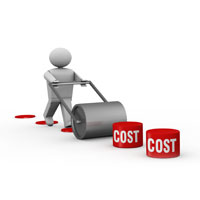8 Ways to Save on Auto Insurance in Kennebunk

No one in their right mind likes paying for auto insurance, particularly when they are paying too much. Because there are so many choices of insurance companies, it is very difficult to choose the most cost effective company.
It’s smart to compare rates before your policy renews since rates change frequently. Just because you had the lowest rates a few years ago there is a good chance you can find better rates now. There is a lot of bad information regarding auto insurance on the internet, so we’re going to give you some great ways to put money back in your pocket.
Don’t miss out on these eight money-saving discounts
The cost of insuring your cars can be expensive, but you may find discounts that you may not even be aware of. Some trigger automatically when you get a quote, but lesser-known reductions have to be specially asked for before you will receive the discount. If you aren’t receiving every discount you deserve, you’re paying more than you need to.
- Drive Less and Save – Fewer annual miles could qualify for a substantially lower rate.
- College Student – Kids in college living away from home attending college without a vehicle on campus can be insured at a reduced rate.
- Early Signing – Select companies give a discount for signing up prior to your current policy expiring. This can save 10% or more.
- Military Rewards – Being deployed with a military unit may qualify for rate reductions.
- Save over 55 – If you’re over the age of 55, you may qualify for a small decrease in premiums.
- Driver Safety – Completing a defensive driving course can save you 5% or more if your company offers it.
- Government Employees – Active or retired federal employment can save as much as 8% depending on your company.
- Drive Safe and Save – Drivers who don’t get into accidents may receive a discount up to 45% less than drivers with accident claims.
A little note about advertised discounts, some of the credits will not apply to your bottom line cost. Most only reduce the cost of specific coverages such as liability and collision coverage. So even though it sounds like all the discounts add up to a free policy, companies wouldn’t make money that way. But any discount will help reduce your overall premium however.
Do I need special coverages?
When choosing adequate coverage for your personal vehicles, there isn’t really a single plan that fits everyone. Everyone’s situation is unique and a cookie cutter policy won’t apply. For example, these questions may help you determine if you would benefit from an agent’s advice.
- How can I get high-risk coverage after a DUI?
- Why am I be forced to buy a membership to get insurance from some companies?
- How much liability coverage do I need in Maine?
- Should I have combined single limit or split liability limits?
- Can I get a multi-policy discount for packaging my home and auto coverage?
- When do I need to add a new car to my policy?
- Can I afford to buy a different vehicle if my vehicle is totaled?
If it’s difficult to answer those questions then you might want to talk to a licensed insurance agent. To find an agent in your area, simply complete this short form or you can go here for a list of companies in your area. It only takes a few minutes and may give you better protection.
Auto insurance coverage considerations
Understanding the coverages of auto insurance can help you determine the best coverages at the best deductibles and correct limits. The terms used in a policy can be difficult to understand and even agents have difficulty translating policy wording. Listed below are the normal coverages available from auto insurance companies.
Collision coverage protection
This will pay to fix damage to your vehicle resulting from a collision with another vehicle or an object, but not an animal. A deductible applies then the remaining damage will be paid by your insurance company.
Collision coverage pays for things such as colliding with a tree, sustaining damage from a pot hole, hitting a mailbox and damaging your car on a curb. This coverage can be expensive, so consider dropping it from lower value vehicles. Another option is to increase the deductible to bring the cost down.
Comprehensive (Other than Collision)
This coverage covers damage that is not covered by collision coverage. You need to pay your deductible first then your comprehensive coverage will pay.
Comprehensive coverage pays for claims like damage from flooding, hail damage, damage from getting keyed and falling objects. The highest amount you’ll receive from a claim is the ACV or actual cash value, so if the vehicle’s value is low consider removing comprehensive coverage.
Protection from uninsured/underinsured drivers
This protects you and your vehicle’s occupants when other motorists are uninsured or don’t have enough coverage. This coverage pays for injuries to you and your family and damage to your vehicle.
Since many Maine drivers only carry the minimum required liability limits (50/100/25 in Maine), their limits can quickly be used up. That’s why carrying high Uninsured/Underinsured Motorist coverage should not be overlooked. Frequently the UM/UIM limits are similar to your liability insurance amounts.
Medical expense insurance
Personal Injury Protection (PIP) and medical payments coverage reimburse you for short-term medical expenses like dental work, X-ray expenses and chiropractic care. They are often utilized in addition to your health insurance plan or if you lack health insurance entirely. They cover not only the driver but also the vehicle occupants in addition to being hit by a car walking across the street. Personal injury protection coverage is not available in all states and gives slightly broader coverage than med pay
Auto liability insurance
This coverage can cover damage that occurs to people or other property in an accident. This coverage protects you from claims by other people, and doesn’t cover your injuries or vehicle damage.
It consists of three limits, bodily injury for each person, bodily injury for the entire accident, and a limit for property damage. As an example, you may have values of 100/300/100 which means $100,000 in coverage for each person’s injuries, a per accident bodily injury limit of $300,000, and $100,000 of coverage for damaged propery. Occasionally you may see a combined limit which provides one coverage limit rather than limiting it on a per person basis.
Liability coverage pays for things like medical expenses, repair bills for other people’s vehicles and attorney fees. How much liability should you purchase? That is your choice, but it’s cheap coverage so purchase as high a limit as you can afford. Maine requires drivers to carry at least 50,000/100,000/25,000 but you should think about purchasing more coverage.
Additional information is located on the website for the Maine Bureau of Insurance. Click here for link. Maine drivers can download brochures, read state legal mandates and laws, and file complaints about a company.
Buy online or local, you save
When trying to cut insurance costs, you should never skimp on critical coverages to save a buck or two. There are too many instances where an insured dropped liability limits or collision coverage only to find out that their decision to reduce coverage ended up costing them more. The aim is to find the BEST coverage at the best price while not skimping on critical coverages.
Throughout this article, we presented a lot of ways to reduce auto insurance prices online. The key concept to understand is the more companies you get rates for, the better likelihood of reducing your rate. Consumers may even find the lowest rates come from some of the smallest insurance companies. Smaller companies may only write in your state and offer lower rates than their larger competitors like Progressive or GEICO.


